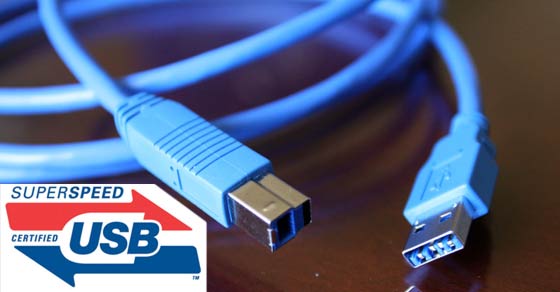The USB 3.0 Promoter Group, a group of companies including Hewlett-Packard, Intel, Microsoft, Renesas, ST-Ericsson and Texas Instruments has finalised a specification for USB Power Delivery which will provide 100W of juice from the little blue socket. The intention is to provide more charging flexibility and a wider range of USB bus powered devices.
The new specification will require upgraded electronically detectable “USB Power Delivery certified cables” for the sake of safety. It will be possible to power a laptop and external drives that used to require their own power supply through the new USB bus power capability. Power direction is switchable so that, for example, an external battery could charge from a laptop USB port when it’s connected to the mains but when the mains is disconnected that battery can be used to power the laptop.

Universal charging
Brad Saunders, USB 3.0 Promoter Group Chairman said “USB Power Delivery enables a path to greatly reduce electronic waste by eliminating proprietary, platform-specific chargers. We envision a significant move toward universal charging based on this specification, most notably for charging notebook PCs using standardized USB power bricks or when connected to USB hubs and desktop displays that integrate USB Power Delivery capabilities.” That would be a welcome move, just like the Micro-USB standardisation within the mobile industry.
Building on success
Robert Hollingsworth of the USB Products Group at SMSC said “USB has always combined data and power over a single cable, and this is widely believed to be a major contributor to the present ubiquity of USB. USB Power Delivery builds on that success and adds full bi-directional power that can be renegotiated as system power needs change with the end-user.” The new specification only concerns power delivery, other key aspects of USB ports such as data transfer rates are not affected by the spec update.
The new USB Power Delivery Specification now set by the consortium will be implemented in the not too distant future. As usual with “new” interfaces the adoption is slow at first due to no peripherals supporting it, and it needs compatibility on both sides of the connection cable. However the connection will be backwards compatible with USB 2.0 and 3.0 and power draw is “negotiated” so connecting low power requirement peripherals won’t cause them to be fried! Addressing another possible worry; old cables won’t be melted by the 100W loads because the new electronically detectable certified cables will be required for higher power transfer.













